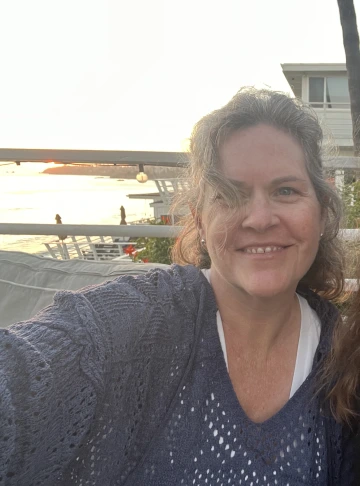Publications:
POST DOCTORAL RESEARCH
Schroeder JA, Al Masri A, Adriance MC, Tessier JC, Kotlarczyk KL, Thompson MC, Gendler SJ. (2004) Sustained alveolar differentiation accompanies MUC1-induced mammary gland carcinoma and metastasis. Oncogene. 23:5739-47.
Hattrup CL, Fernandez-Rodriguez J, Schroeder JA, Hansson GC, Gendler SJ. (2004)MUC1 can interact with adenomatous polyposis coli in breast cancer. Biochemical and Biophysical Research Communications. 316:364-369.
Schroeder JA, Adriance MC, Thompson MC, Camenisch TD, Gendler SJ. (2003) MUC1 alters beta-catenin-dependent tumor formation and promotes cellular invasion. Oncogene. 22:1324-1332.
Schroeder JA, Jackson L, Lee DC, Camenisch TD. (2003) Form and function of developing heart valves: coordination by extracellular matrix and growth factor signaling. Journal of Molecular Medicine. 81:392-403.
Camenisch TD, Schroeder JA, Bradley J, McDonald JA. (2002)Heart-valve mesenchyme formation is dependent on hyaluronan-augmented activation of ErbB2-ErbB3 receptors. Nature Medicine. 8:850-855.
Schroeder* JA, Adriance* MC, McConnell EG, Thompson MC, Pckaj BA, Gendler SJ. (2002) ErbB/beta-catenin complexes are associated with human infiltrating ductal breast and MMTV-Wnt-1 and MMTV-c-neu transgenic carcinomas. Journal of Biological Chemistry. 277:22692-22698.
Schroeder JA, Thompson M, Gardner M, Gendler SJ. (2001) Transgenic MUC1 interacts with epidermal growth factor receptor and correlates with mitogen-activated protein kinase activation in the mouse mammary gland. Journal of Biological Chemistry. 276:13057-13064.
GRADUATE SCHOOL
Schroeder JA, Troyer K, Lee DC. (2000)Cooperative induction of mammary tumorigenesis by TGFalpha and Wnts. Oncogene. 19:3193-3199.
Schroeder JA, Lee DC. (1998) Dynamic expression and activation of ERBB receptors in the developing mouse mammary gland. Cell Growth and Differentiation (cover). 9:451-464.
Schroeder JA, Lee DC. (1997) Transgenic mice reveal roles for TGFalpha and EGF receptor in mammary gland development and neoplasia. Journal of Mammary Gland Biology Neoplasia. 2:119-129.
Berkowitz A, Seroogy KB, Schroeder JA, Russell WE, Evans EP, Riedel RF, Phillips HK, Harrison CA, Lee DC, Luetteke NC. (1996) Characterization of the mouse transforming growth factor alpha gene: its expression during eyelid development and in waved 1 tissues. Cell Growth and Differentiation. 7:1271-1282.
Sandgren EP, Schroeder JA, Qiu TH, Palmiter RD, Brinster RL, Lee DC. (1995) Inhibition of mammary gland involution is associated with transforming growth factor alpha but not c-myc-induced tumorigenesis in transgenic mice.Cancer Research. 55:3915-3927.
UNDERGRADUATE
Schluter SF, Schroeder JA, Wang E, Marchalonis JJ. (1994) Recognition molecules and immunoglobulin domains in invertebrates. Proc. New York Acad. Sci. 712-74-81.
Akins JM, Schroeder JA, Brower DL, Aposhian HV. (1992) Evaluation of Drosophila melanogaster as an alternative animal for studying the neurotoxicity of heavy metals. Biometals. 5:111-120.

